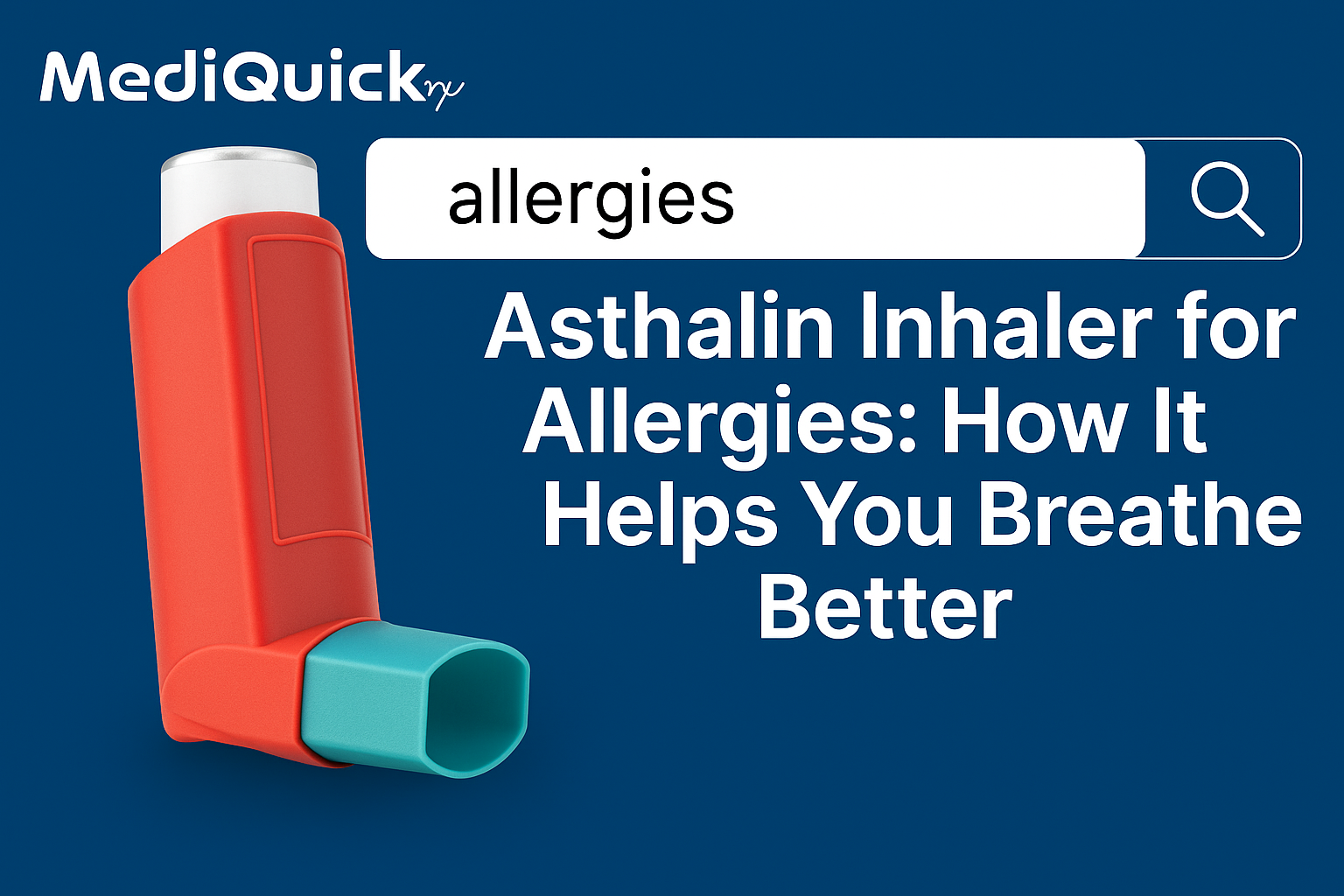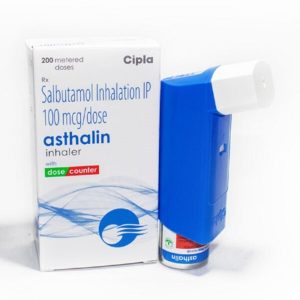Many people consider unrestricted breathing to be a given until they develop respiratory allergies or asthma. Wheezing, coughing, chest tightness, and dyspnea are among the painful and occasionally fatal allergic reactions. The Asthalin Inhaler is among the most reliable drugs for rapidly relieving these symptoms.
This article breaks down everything you need to know—from how it works to when and how to use it safely—should you be experiencing allergy-related breathing problems and wish to know how the Asthalin Inhaler works.
What Is the Asthalin Inhaler?
Commonly used to treat asthma, allergic bronchitis, and other breathing difficulties brought on by allergens or environmental factors, the Asthalin Inhaler is a bronchodilator. Salbutamol, a fast-acting beta-2 agonist, is its main active ingredient; it is also called albuterol in the United States.
Salbutamol causes the muscles around the airways to relax, therefore widening the lung airways. This action can ease conditions including:
- Wheezing
- Chest constriction
- Breathlessness
- Persistent coughing
Although asthma sufferers often use Asthalin, it is also quite good in offering rapid relief from respiratory allergy symptoms.
Get and stay hard at 98% less cost!
Understanding Allergies and Breathing Issues
When you have respiratory allergies—activated by dust, pollen, mold, pet dander, or pollutants—your immune system overreacts. It causes inflammation in your airways by treating benign compounds as hazards. Classic allergy symptoms include sneezing, nasal congestion, and, occasionally bronchial spasms result from this inflammation narrowing the airways.
In more extreme allergic responses, you could have:
- Difficulty breathing
- Wheezing
- Tightness in the chest
- persistent coughing
Many people consider unrestricted breathing to be a given until they develop respiratory allergies or asthma.
How Does the Asthalin Inhaler Work?
Salbutamol sulfate included in Asthalin works on lung beta-2 adrenergic receptors. The medicine passes straight into your lungs and hooks to these receptors when you inhale it. This produces:
- Breathing muscles’ relaxation
- Widening of restricted airways
- Quick drop in shortness of breath and wheezing
Many people consider unrestricted breathing to be a given until they develop respiratory allergies or asthma.
When Should You Use Asthalin for Allergies?
Many people consider unrestricted breathing to be a given until they develop respiratory allergies or asthma:
- During an inflammatory response generating respiratory difficulties
- If you often react with shortness of breath, before known allergens (such as pet dander or pollen)
- After exercise, if you have exercise-induced bronchospasm
- When dealing with acute allergy-related symptoms include coughing, tightness in the chest, or wheezing
How to Use the Asthalin Inhaler Properly
Many people consider unrestricted breathing to be a given until they develop respiratory allergies or asthma:
- Shake the inhaler well before each use.
- Fully exhale to empty your lungs.
- Close your lips around the mouthpiece and slide it between your teeth.
- One slow, deep breath then presses the inhaler.
- Breathe for ten seconds then gently exhale.
- If you require a second dose, wait at least one minute before starting the procedure once more.
Always use the recommended dose. Overuse can cause negative effects or gradual declining effectiveness.
Precautions and Side Effects
Many people consider unrestricted breathing to be a given until they develop respiratory allergies or asthma:
Common Side Effects:
- Tremors or shakiness
- Headache
- Fast heartbeat (palpitations)
- Nervousness or restlessness
- Muscle cramps
Serious (but rare) Side Effects:
- Chest pain
- Severe dizziness
- Allergic reactions like rash, swelling, or difficulty swallowing
Precautions:
- If you have diabetes, high blood pressure, or heart trouble, see a doctor before use.
- Stay under the advised dosage.
- Tell your doctor whether you are nursing or expectant always.
- After use, rinse your mouth to avoid aggravation of the throat.
Asthalin vs. Preventive Inhalers
Preventive inhalers, such those including corticosteroids like Budesonide or Fluticasone, differ from relief inhalers like Asthalin in several ways. Asthalin offers instant comfort; preventive inhalers gradually lower airway inflammation.
If you find yourself needing Asthalin several times a day, this could indicate poor control of your allergy or asthma. In such a situation, a doctor may recommend a daily maintenance inhaler.
Buying Asthalin: Over the Counter or Prescription?
Though in some areas it may be offered over-counter, Asthalin is only prescribed in many nations. Using it under medical supervision is always ideal, particularly if you have continuous respiratory problems or if this is your first time using an inhaler.
Purchasing Asthalin either from a drugstore or online:
- Make sure the supplier is respectable and licensed.
- Look for the right dose—usually 100 mcg each puff.
- Carefully review stores in a cool, dry environment.
Final Thoughts: Why Asthalin Works for Allergic Breathing Problems
Why Asthalin Helps Allergic Breathing Issues
Allergic responses influencing the respiratory system can be frightening and unpleasant. The Asthalin Inhaler provides quick and consistent treatment for seasonal pollen, pet hair, dust mites aggravating your symptoms. Its rapid action can make all the difference between a little episode and a severe dyspnea.
- But Asthalin should be used sensibly:
- Treat it not as a permanent fix.
- See your doctor for a full asthma or allergy control strategy.
Add it to preventative steps including avoiding allergens and, where needed, using antihistamines.
The Asthalin Inhaler can help you take charge of your day and breathing with correct use.



